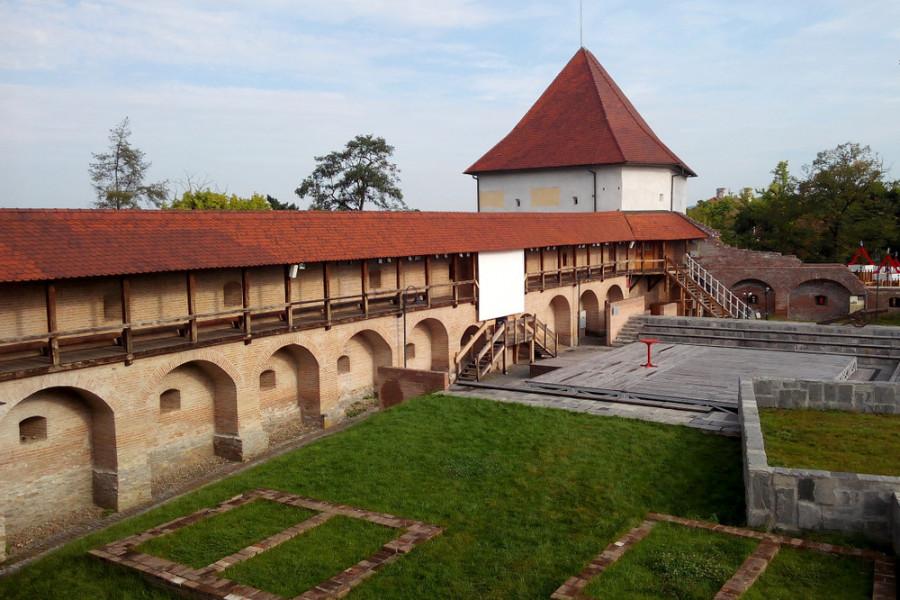Târgu Mureş, with a population of nearly 150,000, is currently the sixth largest city in Transylvania. It has also an international airport, which makes it accessible for tourists from abroad who plan a Targu Mures city break. A famous attraction of the city is the Târgu Mureş fortress, which is located in the city center and is one of the largest preserved castles in Transylvania.
The medieval fortress occupies an area of about 4.5 hectares, and it has 7 bastions with walls: Gate Bastion, Taylors’ Bastion, Butchers’ Bastion, Coopers’ Bastion, Furriers’ Bastion integrated with the Locksmiths’ Bastion and the stair tower, Shoemakers’ Bastion and the Small Bastion. The Reformed Fortified Church is located in the southwestern part of the fortress courtyard, and the fortress commander’s building is located in the southeastern part.
In 1492, István Báthory, the Transylvanian voivode at that time, had a fortress built around the church and monastery that stood there, his aim was to control the Szeklers. The fortress church within its walls was built by Franciscan monks in the 14th century.
The old fortress was destroyed in 1601 (during the reign of György Básta and Mihai voivode). The medieval fortress was rebuilt on the ruins of this destroyed fortress in a decades-long process.
In 1602 Tamás Borsos, the chief judge of the city at the time, persuaded the citizens of the town to rebuild the fortress, which was still smaller and weaker than the current one. After long negotiations, the city finally gained the permission from György Básta and later from István Bocskai voivode to build a larger, new fortress. The actual construction began around 1612 and lasted through the second half of the 17th century. Meanwhile in 1616, Targu Mures gained the status of a free royal city.
In the building process, the fortress acquired its present irregular pentagonal shape, with five bastions at its corners and a gate bastion on the west. The new fortress was built of brick, and for the foundation the builders used stones mined in Malomfalva/ Morești, river stones extracted from the Maros river, and – during the construction of the Shoemakers’ Bastion – stones from the ruins of the Pauline monastery in Szentkirály/ Sâncraiu de Mureş were also used. (This Pauline Monastery was founded in the 14th century, and was the only Pauline monastery in Szeklerland during the Middle Ages. The fate of the monastery and the Pauline monks was sealed by the revolutionary changes brought about by the Reformation. The monastery was burned down and was left empty, most of its stones were carried away.)
Today, the fortress is the venue for many cultural and other events, and is also home to the Wedding Hall and the Fortress Gallery. If you like to visit museums, the Mures County Museum has also located its Archaeological and Historical Department here.
The fortress was restored after an extensive process that lasted several years. As one of the most impressive historical buildings in the city, it hosts many cultural events, festivals, concerts and performances.








